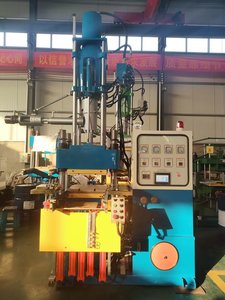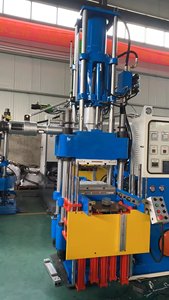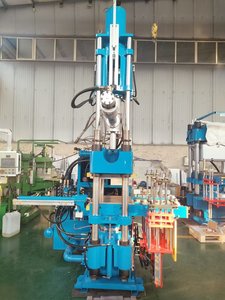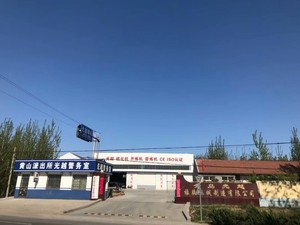(3086 products available)



































































































































































































































Market Overview: The global footwear manufacturing machines market, which includes boot making machines, reached a valuation of approximately $21.6 billion in 2023 and is projected to grow to $31.0 billion by 2032, reflecting a compound annual growth rate (CAGR) of 4.12% during this period, according to Research and Markets. Key factors driving this growth include the increasing sales of high-quality footwear and a rising consumer preference for sustainable materials. The demand for diverse footwear types, including boots, is propelled by evolving fashion trends and the growing influence of social media on consumer choices. Moreover, advancements in automation and robotics are enhancing the efficiency of boot manufacturing processes, reducing labor costs while improving output quality.
Regional Insights: The Asia-Pacific region has emerged as the largest market for footwear manufacturing machines, driven by a booming e-commerce sector and rising demand for superior quality footwear. This region's technological advancements in production processes are also noteworthy. Furthermore, the integration of innovative technologies such as artificial intelligence and 3D printing in boot making machines is optimizing production efficiency and enabling customization, thus enhancing consumer satisfaction. As the boot making machine market evolves, the increasing adoption of environmentally friendly practices among manufacturers signifies a shift towards sustainability, which is becoming a crucial consideration for consumers and businesses alike. Overall, these trends indicate a promising outlook for the boot making machine sector within the broader footwear manufacturing landscape.
A boot making machine is an industrial machine used to manufacture various types of boots and shoes. It is widely used in the shoemaking industry to provide better production efficiency. The following list highlights the different types of boot making machines:
Upper cutting die machine
The upper cutting die boot making machine is used to cut the fabric into upper parts of the boots. Once the upper parts are stitched together, the boot making machine assembles the different pieces around the boot's collar, tongue, and body. This machine is usually made of aluminum or iron.
Sewing machine
It stitches the upper parts of the boots and any other additional fabric together. There are different types of sewing machines, each made for a particular use. While some of them are used for heavy work, others are used for lighter and more intricate work. Nevertheless, all the machines are electrically powered and operated with the help of foot pedals or levers.
Insole stitching
The insole stitching boot making machine carefully attaches the soft, plush layer of material to the top of the boot's sole. This not only provides extra comfort to the wearer but helps to prevent their feet from becoming fatigued.
Midsole and outsole attaching machine
This machine attaches both midsole and outsoles to the boot. The midsole usually helps to provide extra cushioning, while outsoles are the more rugged, tougher surfaces of material that help to protect the shoe from any external damage.
Edge trimmer machine
This boot making machine is used to trim the edges of the boot at any given angle. Trimming the edge of the material is vital for stitching together different pieces and achieving a more rounded and neater look to the boot. The trimmer machine is handheld and can be easily moved around to shape the material at various angles.
Sorting and packing machine
When it comes to putting together a whole shoe or boot, it is vital to know where each part needs to go. The sorting and packing machine helps to efficiently and accurately pack different boot parts together to make one whole piece. Smaller items like eyelets and other fasteners are easily packed and sorted with the help of this efficient machine.
Goodyear welt machine
The Goodyear welt boot making machine is especially popular for use in making expensive designer boots and shoes. This particular machine is known for attaching the upper part of the shoe along with the lining and welt to the sole by way of a stitched waterproof seam. This machine is specially made to ensure perfect stitching and a more durable boot and will often be priced at a higher rate than other stitching machines.
Boot-making machines are widely used in industrial settings to increase footwear production. However, they are not limited to just that. Their versatility implies they can be used in other areas.
The areas listed above are only a few of many. It is apparent that these machines have applications beyond just industrial use.
Business buyers can start with identifying their production needs. They should determine the volume of shoes they produce per day. That includes the level of automation and the range of footwear they want to manufacture. The productivity of the machine should match the demand they are meeting.
Consider the quality of the shoe-making machine. Examine the construction of the machine, working parts, and materials. Ensure that all features are well taken care of and that it will produce boots of great quality. Look at the machine's precision and reliability. Select a machine with a proven track record of consistent output.
Determine the level of automation required. Some machines are fully automatic, while others are semi-automatic. Decide which one suits the production needs best. Consider the skill level of operators. Some machines require skilled operators with specialized training, while others are operator-friendly.
Consider the dimensions and weight of the machines and make sure that they will fit into the production line. Also, check whether there are safety features like emergency stop buttons and safety guards. Those features will minimize the risk of accidents and protect operators from harm.
Business buyers should choose machines that are easy to maintain and clean. Also, they should opt for boot-making machines that have quick-change capabilities if they want to produce different styles of boots. Select a machine that comes with good documentation and has responsive customer support.
Finally, business buyers should consider the cost of the boot-making machine and ensure it is within their budget. They should also consider the energy consumption of the machine, as that will impact the operating cost in the long run.
Q1: How does a boot-making machine differ from manual boot-making techniques?
A1: Boot-making machines offer enhanced precision, uniformity, and efficiency compared to manual methods. While manual techniques provide flexibility for bespoke production, machine-made processes cater to the demand for rapid production and consistent quality.
Q2: Can one boot-making machine handle all boot components?
A2: No. Due to the complexity of boot construction, several specialized machines collaborate to form the parts efficiently. While some machines can process multiple components, distinct machines often handle specific components for optimal efficacy.
Q3: What materials can a boot-making machine work with?
A3: Boot-making machines are primarily designed for boot production. However, specific machines may accommodate various materials. Some may work solely with leather, while others are compatible with multiple materials, including synthetic ones. Advanced machines can be adjusted to modify their compatibility.
Q4: Are boot-making machines adaptable for different boot styles and designs?
A4: Yes! One of the main advantages of boot-making machines is their adaptability to various boot styles and designs. Whether fashion-forward ankle boots or functional work boots, machines can be adjusted and fitted with different molds and dies to produce various boots.